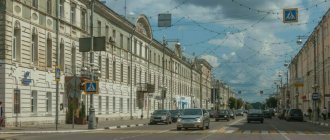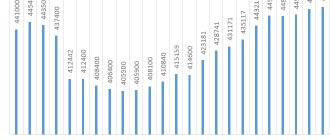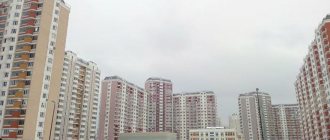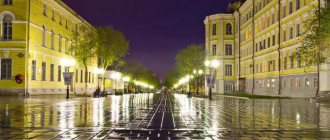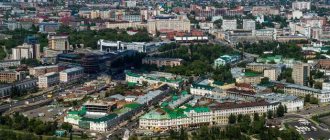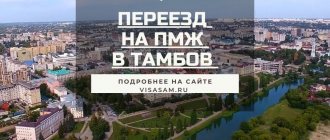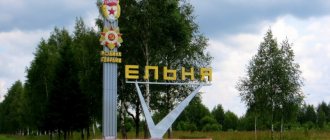The Republic of Karelia is located in the north-west of our country. This region is culturally unique, because the Slavic population here is adjacent to the Finnish, and the Catholic population is adjacent to the Orthodox. The indigenous ethnic groups of the Republic - Vepsians and Karelians - have their own written language and language, which is studied in schools and kindergartens. For many years, the population in Karelia has been decreasing. Young people are leaving for big cities in search of work. The population as a whole is aging. The mortality rate from diseases is also quite high.
Brief information about the Republic
Karelia is part of the Northwestern Federal District of the Russian Federation. It was formed in the summer of 1920, when the Soviet government adopted an order to form an autonomous region here, called the Karelian Labor Commune. Three years later the region was renamed. Now Karelia was called the Karelian Autonomous Soviet Socialist Republic.
The area of the Republic is 180 thousand square meters. km, which is 1 percent of the country's territory. Karelia borders with Finland in the west, with the Leningrad region and Vologda region in the south, with Murmansk in the north, and with Arkhangelsk in the east. There is access to the White Sea in the east. The administrative center of the Republic is the city of Petrozavodsk.
The region includes 16 municipalities. There are 13 cities and 11 urban-type settlements on the territory of Karelia. The population mainly lives in cities.
Almost half of the territory of the Republic of Karelia is covered with dense forests (49 percent). The fauna of the region is extremely diverse. Karelia is a country of lakes: there are 61 of them.
The climate in the Republic is transitional from continental to maritime. Here summers are short, but winters are relatively mild.
Religion
According to a large-scale survey by the Sreda research service conducted in 2012, the item “I believe in God (in a higher power), but I don’t profess a specific religion” in the Republic of Karelia was chosen by 44% of respondents, “I profess Orthodoxy and belong to the Russian Orthodox Church” - 27% , “I don’t believe in God” - 18%, “I profess Christianity, but do not identify myself with any of the Christian denominations” - 2%, “I profess Protestantism (Lutheranism, Baptistism, Evangelicalism, Anglicanism)” - 1%, “I profess traditional the religion of my ancestors, I worship the gods and forces of nature" - <1%, "I profess Islam, but I am neither a Sunni nor a Shiite" - <1%, "I profess Orthodoxy, but I do not belong to the Russian Orthodox Church and am not an Old Believer" - <1% , “I profess Orthodoxy, I am an Old Believer” - <1%.
History of the region
The heterogeneous composition of the population of the Republic of Karelia developed gradually. Initially, even before the second millennium BC, Finno-Ugric tribes such as Korela, Ves, Lapps (other names: Sami, Karelians, Vepsians) settled and lived here. Then the Slavs from Veliky Novgorod came to the lands, gaining a foothold on the shores of Lake Onega and the White Sea. The peoples coexisted peacefully until the twentieth century.
During Soviet times, the situation changed radically. The Russians began to develop these lands more actively, and there were fewer and fewer indigenous nationalities left. So, in 1920, there were 59% Karelians in the region, and only 38% Russians. In just six years the situation has become diametrically opposite. In Karelia in 1926 there were only 37% Karelians and already 57% Russians. After a few more years, the Baltic-Finnish segment's population shrank even further. The number of residents calling themselves Russians (Ukrainians and Belarusians often also counted themselves among them) increased to 85%.
At the beginning of the Soviet rule, only 250 thousand people lived in the region. Over forty years, their number increased 2.5 times - to 650,000 inhabitants.
Population dynamics of Karelia
Since 1990, the number of inhabitants in the region has been steadily declining. So, if in 1995 the population of Karelia was 770 thousand inhabitants, then after 7 years it was already 716 thousand. In 2010, only 643 thousand inhabitants lived in the Republic. The data for 2017 is also disappointing. The population continues to decrease and now amounts to only 627 thousand inhabitants.
In total, only 3.5 inhabitants live on one square kilometer of Karelian lands. The population density of Karelia in its northern regions is even lower: 1.5 people/1 sq. km. The most sparsely populated region of the Republic is Kalevalsky. The largest population is in the south (where the population density is 8.7 people/1 sq. km.
Tourism in Karelia
Tourism is an important part of the economy of Karelia, accounting for more than 5% of the republic's GDP. First of all, the region attracts tourists with its nature and natural attractions, as well as historical and architectural monuments. Low population density and competitive prices help attract a flow of people. A huge number of rivers and lakes attract lovers of water tourism, fishermen and hunters.
Some events (for example, stages of the Russian Rally Championship) attract tens of thousands of people here every year. Many areas host other events that annually attract tourists' interest.
However, it is worth noting that the tourist service in Karelia still leaves much to be desired. The leadership of the republic is taking certain steps in this direction, the flow of tourists is growing every year, but in this regard, Karelia still has room to grow. However, for lovers of wild outdoor recreation, hiking, etc., Karelia is one of the most attractive regions in the Northwestern Federal District.
Rally
Demographic situation in the region
The population in Karelia is mainly represented by urban residents. 80% of the region’s residents live in cities (Petrozavodsk, Medvezhyegorsk, Kostomuksha, Segezha, Kondopoga, Sortavala, Belomorsk and others). Of these, 59% are able-bodied, 16.7% are children and youth, and 24% are old people. There is only one city in the region with a population of more than one hundred thousand people - Petrozavodsk (275,000). The remaining cities have a maximum of 30,000 inhabitants.
Unemployment in the region is 2.1% (of those registered at the labor exchange), that is, about 7,000 people are without regular income.
Life expectancy in the Republic is 69 years. The birth rate is 12 babies per thousand population, which is higher than in the capital of the country, Moscow (where the rate is 11 to 1000). However, the mortality rate is also quite high, the rate of which in recent years is 14.6. According to health statistics, at the beginning of the millennium the death rate was twice as high as the birth rate.
In general, the demographic situation in Karelia can be described as complex. The population continues to age. Young people are leaving for big cities: St. Petersburg, Veliky Novgorod, Moscow. Residents are leaving some areas of the region in the thousands. Due to high mortality rates from alcohol poisoning, heart disease and cancer, the population of Karelia continues to decline.
Total information
- Total
: 643,548 (2010), 716,281 (2002)
Urban
: 502,217 (78.0%; 2010), 537,395 (75.0%; 2002) - Rural
: 141 331 (22,0 %; 2010), 178 886 (25,0 %; 2002) - Men
: 293 244 (45,6 %; 2010), 331 505 (46,3 %; 2002) - Women
: 350 304 (54,4 %; 2010), 384 776 (53,7 %; 2002)
: 1195 (2010), 1161 (2002)
: 39.6 years (2010), 37.1 years (2002)
- Urban
: 35.9 years (2002)
: 40.6 years (2002)
: 36.5 (2010); 33.9 years (2002)
: 42.2 years (2010), 39.9 years (2002)
: 270,841 families out of 633,444 inhabitants (2010); 279915 out of 701314 people (2002)
- In the city
: 209,449 families out of 495,060 inhabitants (2010); 208,041 families of 525,964 people (2002)
: 61,392 families out of 138,384 inhabitants (2010), 71,874 families out of 175,350 people (2002)
(2005)
- Births
: 6,952 (fertility rate 9.9‰)
: 12,649 (death rate 18.1‰)
Ratio of men and women (Rosstat data)
Ethnic composition
Karelia is a multinational region of Russia. Various nations lived peacefully here for hundreds of years. Russians in the Republic are the overwhelming majority: according to the 2010 census - 78%. The second largest nation in Karelia is the Karelians, with 45 thousand inhabitants (approximately 7%). The number of Belarusians and Ukrainians living in the Republic is also quite high – there are 23,000 and 12,000 people, respectively. Another indigenous ethnic group of the region - the Vepsians - only 3 thousand people remain. There are 8,000 Finns living in Karelia.
As for other national minorities, Tatars, Azerbaijanis, Armenians, Poles, Mordovians, Germans, Chuvash, Tajiks, Jews, Georgians, Lithuanians, Moldovans, Chechens, Mari, Udmurts and others also live in the Republic.
Farm
The main goal of the region's development is to increase the quality of life, achieve balanced growth and create the potential for active participation in the system of domestic and international division of labor and exchange. The Governments of the Russian Federation and Karelia adopted the relevant regulatory legal acts establishing these tasks. Among them are the “Strategy and Concept of Socio-Economic Development”, as well as the “Territorial Planning Scheme”.
There are many industrial enterprises operating in the Republic, most of which are focused on local natural resources. The region is dominated by industries such as metallurgy, woodworking and paper production. As for agriculture, there are no natural and climatic conditions for its successful development in the region. Only 1.2% of all land is arable. About 60% of arable land is located on podzolic soils of varying composition. However, livestock farming has developed in Karelia. The volume of commercial fish farming products exceeds 120 thousand tons. As for the service sector, tourism plays the largest role.
Languages spoken in the region
The official language of the region, as well as the entire country, is Russian, but in Karelia the population also speaks other languages. 15 thousand residents of the region speak Karelian; it even had state status in Soviet times. This, however, was a very short period between 1937 and 1940. Today there are discussions about returning the language to state status.
Minority languages are also taught in kindergartens, schools, and universities. These are Finnish, Karelian and Vepsian. All of them belong to the Uralic language family (Finnish branch). These are quite complex languages, having from 10 to 15 cases.
In addition to Russian, you can choose one more language at school. Mostly they choose Finnish.
Culture
About a hundred different nationalities live in Karelia. And they all have their own traditions and customs. The majority of the region's population today considers themselves Russian, but this does not negate the fact that national languages are taught in schools and universities. Newspapers are published on them and television programs are broadcast. More than 60 different public organizations are registered in Karelia. Perhaps this is why all peoples manage to coexist quite peacefully, despite differences in traditions. The “Karelia – Territory of Harmony” program being implemented in the region also plays a positive role. The official language is Russian. Karelian does not have such status, but this issue is low priority, which is due to its low prevalence.
Traditional Karelian crafts differed from Central Russian ones. However, they did not gain all-Union fame. Today in Karelia there is only one enterprise that deals with traditional crafts. As for literature, it was formed on the basis of Russian and local folklore. The development of painting in the region is closely connected with the traditions of icon painting. However, the nature of the region has become an inspiration for many famous Russian artists. Among them are such masters as Shishkin, Roerich, Kuindzhi.
